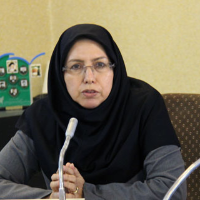Construction and psychometric analysis of possible selves’ questionnaire in students
The purpose of the present study was to construct, validate and make of balanced possible selves questionnaire in students.
The research method was descriptive correlational type and the statistical population of the study consisted of 243534 students in the first grade of high school in Tehran city in 2018-2019 academic years which through them (207 females and 214 males) were selected by multistage random sampling. In the present study, in order to determine the factor validity of the possible selves’ questionnaire, the statistical method of confirmatory factor analysis was used.
The results of confirmatory factor analysis statistical method showed that the three-factor structure of the possible selves’ questionnaire includes (χ2 /df=1.87, CFI=0.914, GFI=0.907, AGFI=0.854, RMSEA=0.076). The results of the correlation between the dimensions of the questionnaire provided evidence of the multidimensional structure of the tool. The internal consistency coefficients of the components of goals, tasks and concerns and the total items were 0.97, 0.82, 0.88 and 0.87, respectively.
Since the fit indices of the factor analysis model had a good fit and the Cronbach's alpha coefficients indicated the internal consistency of the items of this tool, the questionnaire has good validity and reliability and it can be used to assess balanced possible selves’ and to check for inconsistency among high school students.
concerns , goals , possible selves , tasks
-
A Comparison of the Effectiveness of Social-Emotional Cooperative Learning and Mindfulness Training on Improving Social Problem Solving Skills
Malihe Ahmadi *, Kianoosh Hashmian, Fariborz Dortaj,
Educational Psychology, -
Development and Validation of the Positive School Orientation Questionnaire
Malihe Ahmadi *,
Educational Measurement,



